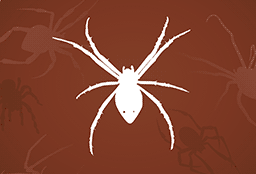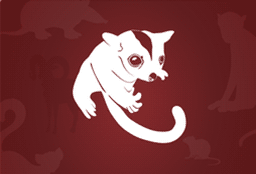A tall tree to 40 m with smooth bark, mottled, shedding at intervals throughout the year showing white, yellow and grey, becoming roughened at the base.
Frequently a straight tree but can develop more twisted habit in drier conditions.
Leaves
The tree has a large, dense crown of long and narrow adult leaves, lanceolate in shape or infrequently sickle-shaped, 5 - 30 cm long by 0.7 - 3.2 cm wide, and grey to grey-green on both surfaces. Side veins are prominent and usually at 45° to the leaf midrib, and oil glands are numerous and located separate to the veins.
Flowers
Its inflorescences (flower heads) are comprised of umbels of 7 to 11 flower buds located at the junction of the leaves and stem with the buds being of ovoid or globular shape and 0.6 - 1.1 cm long by 0.3 - 0.6 cm wide. Buds are green to yellow or cream, and have a prominent tip beak. Flowers are white to cream.
Small, semi-succulent, spreading shrub that grows 1 - 2 m tall. Branches grow to 1 m long.
Leaves
Leaves are green in colour with fine white hairs. Leaves are semi-succulent, cylindrical in shape and grow up to 2 cm long.
Flowers
Flowers are small and solitary, held in the leaf axils (where leaf joins stem).
Its genus name Banksia is named after Sir Joseph Banks, a British explorer and naturalist, and its species name marginata is from the Latin 'marginatus' meaning bordered, referring to the recurved leaf edges.
A variable species that occurs as a shrub, a flat-lying plant, or a tree, with smooth brown-grey bark. Grows up to 2 m high and wide as a shrub, less than 1 m as a flat-lying plant, and between 5 – 12 m as a tree.
Leaves
Green on the upper surface and silvery underneath. Each leaf is linear to oblong-shaped, 1 – 8 cm long, 3 – 13 mm wide, and has finely-toothed edges. The edges are recurved (rolled under) and may have small serrations, and their tip can be blunt or squared.
Flowers
Pale yellow cylindrical spikes forming a bottle-brush shape. Each flower head is 5 – 10 cm long and 4 – 6 cm wide and attracts nectar-eating birds.
Fruit/seed:
Perennial, rhizomatous herb with strappy leaves.
Leaves
Glossy green, firm and flat. Long and thin up to 1 m long and roughly 1 cm wide. Leaves are usually taller than the flowering stem. Leaf base is broad with brownish edges. Tips of leaves have teeth.
Flowers
Grow in a whorled cluster attached to a straw-coloured bracts. Individual flowers are roughly 4mm long, but the cluster and leaf grow to 50 cm. Have a strong scent. Flower head is brown – during flowering petals are creamy yellow.
This spider is named for the cross the female weaves into the web. There are many theories about why the female does this including, strengthening the web, for camouflage, and for increasing prey catches as the cross reflects ultra-violet light which attracts insects. It may also deter predators which must go to the effort of cleaning off the extra silk after diving into the web.
The female has a silvery head with silver, yellow, red and black bands across its abdomen, and two yellow stripes running down its underside. Its legs are dark brown to black with one or two yellowish bands. The male and juveniles are brown and cream, with brown legs. It often appears to have only four legs because it sits with its legs in pairs along the stabilimentum.
Distinctive feature
The zigzag patterns (known as the stabilimentum) it weaves into its web to form an X or a cross, after which it is named.
Grey soft fur, with a white belly and a black stripe that runs from its nose, over its head and along its back. It has a long bushy tail, the last quarter of which is black, often with a white tip. Its ears are large and hairless, and its large eyes are black.
Size
About 28 cm long (from nose to tip of tail).
Males have a rich blue and black plumage above and on the throat. The belly is grey-white and the beak is black. In non-breeding plumage, called eclipse, he is very similar to the female.
Females and young birds are mostly brown above with a dull red-orange area around the eye and brown beak. Females have a pale green gloss, absent in young birds, on the otherwise brown tail. Both sexes possess brown legs.
The nest is dome-shaped consisting of grass, moss, rootlets, twigs, spiders webs and other bramble. Found low in tussock, shrub or bracken.
Lowland Leadbeater’s Possum and Helmeted Honeyeater feed on the flowers of this species, which flowers at a different time from the Mountain Swamp Gum. This overlap of flowering time provides food across an extended period for these creatures.
Small to medium tree, 20 m tall. Bark is variable, dark and rough at the butt; upper trunk and branches peel in ribbons.
Leaves
Juvenile leaves are short-stalked, almost circular. Adult leaves are thick, glossy, dark green, ovate shaped, usually has a wavy edge.
Flowers
White cluster of 3 - 10 (often 7).
Metallic blue-black on top and light to dark grey on its breast and belly. Its forehead, throat and upper breast are rust in colour. It has grey legs and feet, and its eyes and bill are black. A young Welcome Swallow has shorter tail feathers than an adult and its forehead and throat are a creamy beige (instead of rust).
Distinctive feature
A deeply forked tail with a white band or row of spots on the long tail feathers.
Mostly light blue-grey in colour. The forehead, crown, chin and upper throat are white. It has a long, slim neck and a pointed grey-black bill. The legs are long and dull yellow in colour. Easily identifiable when seen from below with the dark flight feathers of the wing contrasting with the paler grey plumage.
Males and females are similar. When breeding, the birds have long feathers (nuptial plumes) on the head, neck and back. Young are similar in appearance to non-breeding adults, with little to no white on the face; underparts often have a reddish colour.
Distinctive feature
Its characteristic white face.
One of Australia's most widespread birds on mainland.Mostly black with a white belly and eyebrow. A young bird has paler, slightly rusty edges to its wing feathers.
Size
18 - 22 cm long (from head to tail)
Dark grey-brown above with some brown streaking. It is paler below with lighter streaks and has a slightly down-curved bill. Young birds are paler.
Distinctive feature
A broad yellow facial stripe across its eye which is bordered with black.




